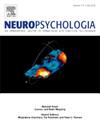Temporal neural dynamics of the competition between extrinsic and intrinsic grouping principles in vision: An ERP study
IF 2
3区 心理学
Q3 BEHAVIORAL SCIENCES
引用次数: 0
Abstract
Previous research has explored the brain correlates of perceptual grouping but, to our knowledge, no preceding study has investigated the neural dynamics of the competition between intrinsic and extrinsic grouping principles in vision. The present event-related potentials (ERPs) study aimed at characterizing the temporal neural dynamics of the direct competition between extrinsic (i.e., common region) and intrinsic (i.e., shape similarity) grouping cues. In separated blocks, participants selectively attended and responded to perceptual clusters based on one of the two grouping cues pitted against each other in a competing condition, which was compared to a uniform, non-grouped condition. Behavioural results indicated larger interference effect of common region over shape similarity cues when both grouping principles competed against each other, supporting a processing dominance of common region. Applying a temporo-spatial principal component analysis (PCA), our ERP data showed four main neural correlates related to perceptual grouping and competition between grouping cues: (1) an enhanced central-posterior N195 associated with perceptual dominance of common region cues during the visual analysis of perceptual grouping; (2) an enhanced posterior P245 presumably reflecting higher confidence in perceptual decisions linked to common region grouping; (3) a posterior P400 possibly indexing the differential allocation of attentional resources related to higher processing efficiency of common region cues; and (4) a P550 that seems to be related to top-down suppression activity for the termination of the current trial.
视觉中外在与内在分组原则竞争的时间神经动力学:ERP研究。
以往的研究已经探索了感知分组的大脑相关性,但据我们所知,之前没有研究调查视觉中内在和外在分组原则之间竞争的神经动力学。事件相关电位(event- correlation potential, ERPs)研究旨在表征外在(即共同区域)和内在(即形状相似)分组线索之间直接竞争的时间神经动力学。在分开的分组中,参与者选择性地参与并回应在竞争条件下相互对立的两个分组线索之一的感知集群,并将其与统一的非分组条件进行比较。行为结果表明,当两个分组原则相互竞争时,共同区域对形状相似性线索的干扰作用更大,支持共同区域的处理优势。应用时空主成分分析(PCA),我们的ERP数据显示了与知觉分组和分组线索之间竞争相关的四个主要神经关联:(1)在知觉分组的视觉分析中,中央-后验N195增强与共同区域线索的知觉优势相关;(2)后验P245的增强可能反映了与共同区域分组相关的感知决策的更高置信度;(3)后验P400可能指示了与共同区域线索加工效率较高相关的注意资源分配差异;(4) P550似乎与终止当前试验的自上而下抑制活动有关。
本文章由计算机程序翻译,如有差异,请以英文原文为准。
求助全文
约1分钟内获得全文
求助全文
来源期刊

Neuropsychologia
医学-行为科学
CiteScore
5.10
自引率
3.80%
发文量
228
审稿时长
4 months
期刊介绍:
Neuropsychologia is an international interdisciplinary journal devoted to experimental and theoretical contributions that advance understanding of human cognition and behavior from a neuroscience perspective. The journal will consider for publication studies that link brain function with cognitive processes, including attention and awareness, action and motor control, executive functions and cognitive control, memory, language, and emotion and social cognition.
 求助内容:
求助内容: 应助结果提醒方式:
应助结果提醒方式:


